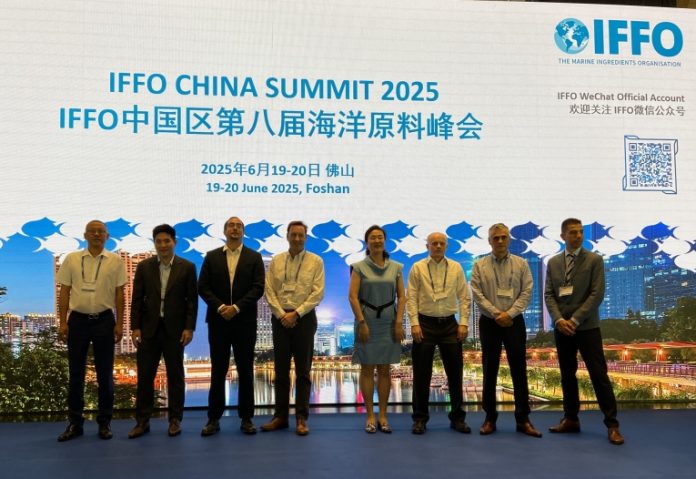IFFO China Summit highlights resilience, growth, and regional contrasts in global marine ingredient markets.
IFFO’s 8th China Summit, held 19–20 June in Foshan, drew 148 delegates from 18 countries for two days of discussion on global fishmeal and fish oil markets, with a strong focus on Asian production, trade flows, and sustainability.
IFFO Market Research Director Enrico Bachis reported that global production of fishmeal and fish oil in 2024 remained in line with the past decade’s average. Asia accounted for 30–35% of global supply, with intra-Asian trade expanding. By-products continue to dominate raw material inputs for fish oil in the region, with China in particular exhibiting distinct production and consumption trends compared to global averages.
In Peru, the world’s largest fishmeal exporter, landings reached 4.7 million tonnes in 2024. Didier Saplana, COO of Austral Group, said this translated into over 1 million tonnes of fishmeal production, aided by strong biomass health and favourable ocean conditions in early 2025. The Peruvian fleet fulfilled 70% of the season’s 3 million tonne anchovy quota by mid-June, with 50% landed in the first 30 days.
Chilean production has also risen. Jorge Bernales of Camanchaca reported landings were up 53% year-on-year in 2024 due to the easing of El Niño conditions. In 2025, Chile’s quota stands at 710,000 tonnes. Fishmeal exports from Chile continue to be dominated by demand in China and Southeast Asia (70%), with Europe remaining the leading market for Chilean fish oil (83%).
Thailand’s fishmeal sector, represented by Kittipat Oerareemitr of the Thai Fishmeal Producers Association, reported that 58% of production is derived from by-products. Fourteen plants are certified under the MarinTrust programme, and four more are engaged in Fishery Improvement Projects.
In the US, Jostein Rortveit of American Seafood said fishmeal supply is expected to remain stable in 2025. The Alaska pollock quota rose 5% while hake fell 26%. Domestic demand for white fishmeal remains strong, particularly in pet food.
China continues to be the world’s largest consumer of fishmeal, with imports expected to reach 2 million tonnes in 2025. Domestic output remains at 400,000–600,000 tonnes annually. Zhaogang Jiang of Evergreen International noted that despite a reported decline in feed demand, leading Chinese aquafeed producers are increasing fishmeal use to enhance performance. He anticipates a 20% increase in fishmeal demand in 2025.
Kevin Ransbotyn of Alliance Nutrition Group reported rapid growth in China’s omega-3 market, particularly in pet food and dietary supplements. E-commerce sales of fish oil products in the first quarter of 2024 grew 26% year-on-year. Government initiatives and demographic trends, such as an ageing population, are expected to further drive demand.
Looking ahead, IFFO’s Bachis and GOED’s Ellen Schutt highlighted the need for alternative feed ingredients to meet rising EPA and DHA requirements. Saplana expressed confidence in Peru’s ongoing fishing conditions, while Bernales noted a shift in Chilean jack mackerel use from fishmeal to direct human consumption, reflecting broader changes in market dynamics.


